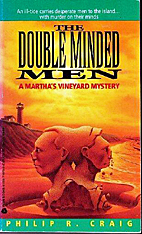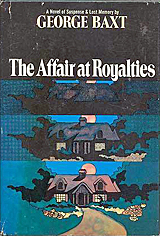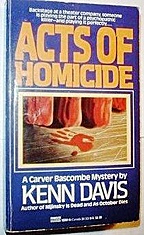REVIEWED BY DAVID VINEYARD:
ZEPPELIN. Warner Brothers, US/UK, 1971. Michael York, Elke Sommer, Peter Carsten, Rupert Davies, Marius Goring, Anton Diffring, Andrew Keir, Alexandra Stewart. Screenplay by Arthur Rowe & Donald Churchill, based on a story by Owen Crump. Directed by Etienne Pèrier.

This big wartime adventure film often looks good, and has some decent photography and special effects, but it’s as leisurely as some of E. Phillips Oppenheim’s World War I diplomatic spy novels, which it too often resembles, when it could use a healthy dose of John Buchan-style action or even William LeQueux melodrama.
Michael York is perfectly cast as Lt. Geoffrey Richter-Douglas, a Scot of mixed German background assigned to a desk at Whitehall, thanks to his vertigo, when London is attacked from the air and bombed by German zeppelins for the first time. The country is in a panic, the government is asking questions, and unknown to Geoffrey, he is in the cross-hairs of Captain Whitney of British Naval intelligence (Rupert Davies) under the direction of the famous Admiral Needles Hall (Richard Hurdnall) — the brilliant British spy who uncovered the famous Zimmerman telegram — and German Military Intelligence in the person of seductive Alexandra Stewart.

When the Germans try to recruit Geoffrey to defect, he learns that is exactly what his people want him to do, defect and use his contacts in Germany, notably Professor Anschul (Marius Goring) to get a look at the new zeppelin he is developing. In no time Geoffrey is in Germany, where he discovers his knowledge of Scotland is part of a German plan by Colonel Hirsch (Anton Diffring) and Major Tautner (Peter Carsten) to use the new zeppelin to destroy British morale once and for all and end the war.
Complicating things are Professor Anschul’s beautiful younger wife Erika (Elke Sommer), who sees right through Geoffrey, but doesn’t care he is a spy so long as her husband isn’t hurt.

In short order, Geoffrey finds himself on board the zeppelin commander by Captain Von Goirer (Andrew Kier) under the watchful eyes of Hirsh and Tautner on its mission to destroy the treasures of the British empire stored in an abandoned Scottish castle in the highlands for the duration, trying to survive and contact his people.
There is a fairly exciting raid on the castle, somewhat undercut in that the hero stands around for the duration with his hands in the air, then a nicely shot attack on the zeppelin by the RAF as they try to escape with Geoffrey on board, then the film just sort of fizzles to the end with nothing much resolved except most of the cast is dead and the rest are wet, and considering Sommer is covered to the throat in coveralls for most of the picture, even her wet in a white blouse is a let down.

Zeppelin is by no means a bad movie. It is perfectly cast, it looks great, and if it had been made in the 1930‘s it would likely be one of my favorite films, but if had been made then, it would be half an hour or more shorter, and not waste so much time on a preachy anti-war message that never rises to the level of irony, so it just gets in the way.
A much better film would have been to do it tongue in cheek in the manner of The Assassination Bureau, but that isn’t the film they made. As it is, made in Technicolor and widescreen in 1971, it isn’t dull, but it isn’t very exciting either, a fatal flaw for a big screen action epic. Still, if you ever wanted to see a Technicolor film of an Oppenheim WWI era spy novel, minus the slapstick and musical numbers of Blake Edwards’ Darling Lily, this is pretty much your best bet.


